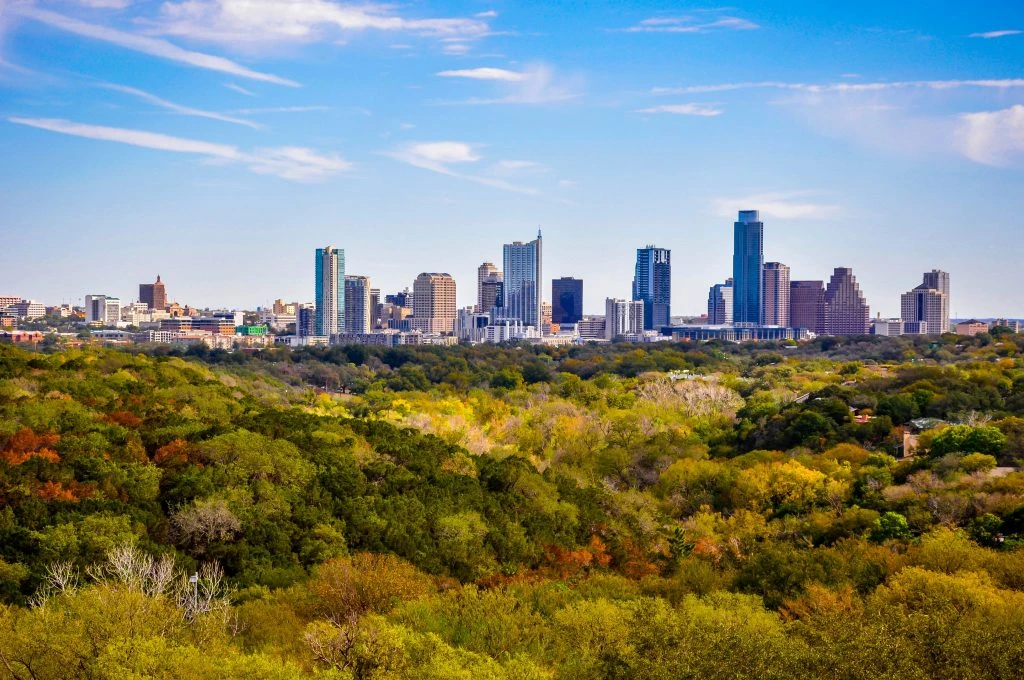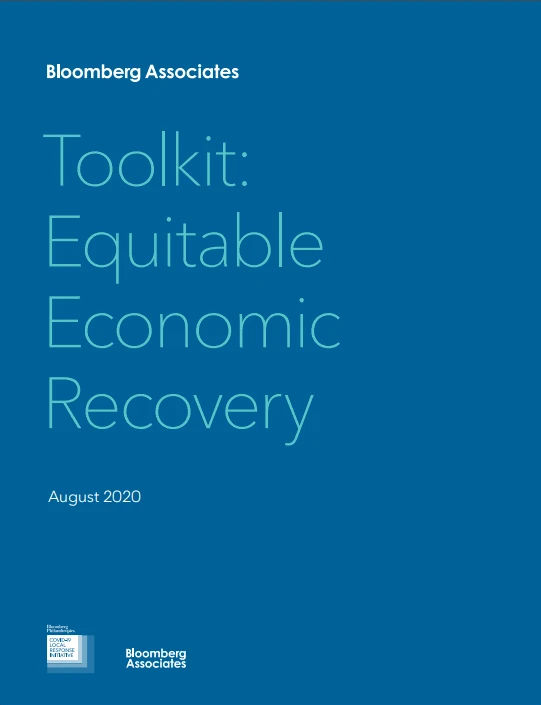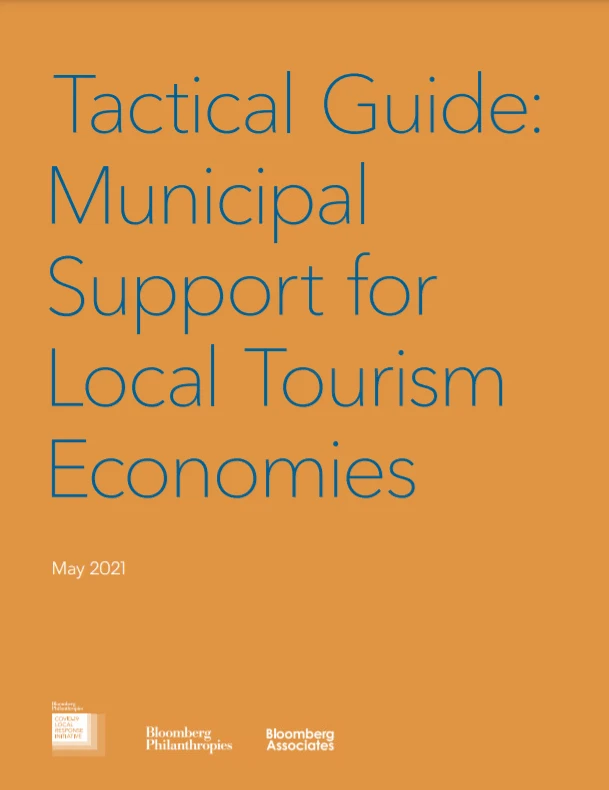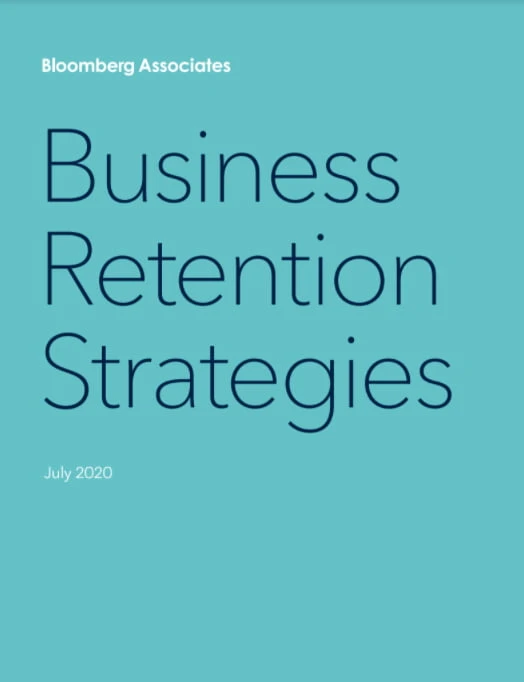COVID-19 Economic Response and Recovery
Implement incentives to help low-income and minority communities
Problem:
For decades, cities have used incentives to attract and retain businesses. Historically, incentives often caused “race-to-the-bottom” dynamics that hurt all cities involved, where cities give significant tax breaks without considering overall economic goals, because they felt the need to compete on cost with other cities. Research shows that this has led to the “prisoner’s dilemma”, where each city offers additional incentives until it may not be in a city’s interest to have the company located there given the tradeoffs.
However, this does not mean that incentives should never be used. When crafted thoughtfully to align with local economic development goals and drive local growth and jobs, incentives can be a useful tool. With many businesses struggling due to COVID – with an expectation that all companies will continue to suffer due to the pandemic – cities need to think about how they will support their local businesses. As the economy starts to recover and businesses are looking to expand again, local communities need to be situated to capture this growth.
Action:
Cities should retool existing and/or develop new business incentives to advance equitable economic growth. Incentives should be structured to successfully attract and retain good jobs while requiring employers to develop local talent, particularly for low-income residents and people of color.
Case Study
Birmingham, Alabama “TIP TAP TOP” Program
Shipt was a start-up founded in Birmingham, AL, in 2014. The online grocery delivery platform grew rapidly and was acquired by Target in 2017. After acquisition, the company projected 881 jobs would be added over the next three years, but the question was where those jobs would be located: would they place those jobs in the Bay Area – where some employees were already based? Would they move jobs and headquarters to Minneapolis where Target is headquartered? Or, would they keep those jobs in Birmingham?
The City of Birmingham realized that to ensure Shipt and Target would keep jobs in their city, it would need to incentivize them to stay. But, the City did not want to just offer incentives that lowered tax collection without furthering economic development goals. Therefore, the City developed an innovative incentive program: “TIP TAP TOP.” All three elements described below are tax abatements against the taxes that SHIPT owes the City in exchange for the investment in three areas:
- Talent Investment Program (TIP): Shipt invests in training for “demand-driven” occupations via occupational tax abatements. The program focuses on recruiting people for positions that are difficult to source locally (e.g., web developers, software engineers) who relocate and move to the area. It could include providing supplemental salary, relocation assistance, etc.
- Talent Acceleration Program (TAP): Shipt supports tuition assistance, learning, and skill development designated for enabling existing low-wage and lower-skilled employees to grow into other positions within the company. This includes enrolling in skill training programs, classes, and other entities.
- Talent Optimization Program (TOP): Shipt supports the hiring of local talent, training, and development (e.g. management training and continuing education) for current employees; and the attraction of national talent. This is the main element of the program and includes targeted funding to hire local university students.
Shipt is responsible for all program expenses and is only able to apply for reimbursement for a portion (up to ~$1.76M). In its draft project agreement (attached), Birmingham explicitly describes which costs are eligible/ not eligible for reimbursement, and Shipt only receives reimbursement after successful implementation (e.g., only can receive reimbursement for TOP if new local talent is hired).
Birmingham implemented the program in 2018 and convinced Shipt to keep jobs — and expand — locally. The City has a robust set of success metrics to evaluate the program (see document in resources section). All the above incentives are only provided based on individuals who have successfully gone through the program.
Other examples:
Several other cities have implemented similar, targeted incentives programs. For example, Austin’s Business Expansion Incentive Program provides support for businesses that are growing and looking to hire local, hiring employees with barriers, or reconsidering moving to Austin. These incentives include some wage reimbursement and are paid out annually at the end of the year. To apply, businesses can submit an incentive inquiry to start the process.
The program offers incentives to three types of businesses:
- Local Austin businesses (e.g., those already based in the area)
- Businesses that are growing locally can get up to 3% wages reimbursement per job / per year (max $1,800) and up to 50% property tax reimbursement
- To be eligible for these incentives, businesses must have registered and been operational in Austin for at least 12 months and have created at least 5 jobs over 5 years paying (at minimum) the Austin living wage.
- Employers hiring targeted populations
- Businesses hiring employees with barriers can receive up to $3,000 per target job / per year and up to 50% property tax reimbursement
- To be eligible for these incentives, businesses must have created 1 job for targeted populations and the pay must be (at minimum) the Austin living wage
- Businesses relocating to Austin.
- Businesses that relocate to Austin can get up to 3% wages reimbursement per job / per year (max $1,800) and up to 50% property tax reimbursement
- To be eligible for these incentives, businesses must have no significant presence in Austin (defined as 5 or fewer Austin employees) and create at least 75 jobs over 10 years paying (at minimum) the Austin living wage.
How to adapt this approach:
- Identify community priorities that should be served by an incentives program (e.g., talent investment, local hiring, business attraction)
- This should be done by looking at the greatest community needs (e.g., if a community has a lack of a certain type of high-in-demand job type or if a university has a particular program that produces many graduates with specific skills).
- Develop new or retool existing incentives program with incentives linked to clear equitable outcomes/metrics (See template in resources section)
- A reasonable tax abatement should be set per job created/ attracted/ saved, depending on local circumstances. Incentives should focus on low-income and communities of color (look to Birmingham and Austin examples, below, for suggested figures for incentives).
- Note: Incentives should be given after companies have demonstrated impact (e.g., provide data to city officials showing # of local hires)
- Reach out to local and prospective businesses to market test incentives. Confirm with companies that the incentives will be useful for them.
- Obtain approval for incentives program from authorizing body (generally city council)
- Develop materials to explain incentives program and how businesses can take advantage of them
- Reach out actively to local businesses to highlight new incentives program
- Engage potential businesses that would consider expansion
- Develop agreements with businesses for incentives program
- Track success of program using clearly established and agreed-upon metrics with individual businesses (See template in resources section)
Benefits:
- Attracts businesses and talent to local community
Leverages employers to invest in low income and people of color and connect them to good jobs.
Risks:
- Lost tax revenue for the city
- Companies may threaten to leave and/or not commit to the community unless they receive incentives
Impact: Medium
Implementation time: Slow
Cost: Low. Your city will need FTE to implement the program and monitor progress.
Learn more about the Toolkit
COVID-19 Economic Response and Recovery
Increase Broadband Connectivity to Enable More People to Work Remotely and Support Business Growth
Problem:
The COVID-19 pandemic has underscored the importance of broadband access for employment, education, and overall quality of life. And yet, millions of Americans don’t have access to quality broadband (defined by the FCC as 25 mbps download and 3 mbps upload speeds). At least 21 million Americans (and perhaps as many as 40 million, according to some estimates) currently lack access to broadband; and, even among those Americans with access, approximately 100 million do not subscribe to the service. Improving access not only enables remote work but can increase property values.
While many jobs will return as “in-person”, an increasing number of companies have said they will focus on remote employment. COVID-19 forced millions of Americans to work from home and attend remote classes. Some businesses are realizing that their employees can successfully work remotely, and save related costs from doing so. Schools face uncertain paths to reopening with many districts using remote schooling for the foreseeable future. To address these fundamental changes, cities will need to ensure that all residents have access to broadband. This means both building the physical infrastructure and ensuring affordability.
Action:
Cities should provide broadband access to all residents through 1) extending broadband physical infrastructure and 2) providing funding for low-income residents to receive broadband. This will enable residents to work remotely, local businesses to compete at a larger scale, and students to receive remote education.
Facilitating access to broadband requires different solutions depending on local circumstances. For some communities, there are issues with physical broadband infrastructure. For others, most residents have access but are unable to access it due to affordability. The latter can be addressed through direct or indirect subsidies.
Case Study
Wilson, North Carolina: Greenlight Community Broadband
Wilson, North Carolina (population ~50,000) was facing an uncertain and troubling economic future. The decline of the manufacturing and tobacco industries had impacted their economy and lack of job availability was causing many to leave the City. Recognizing that it needed to adapt to the changing employment landscape, the town decided to prioritize broadband installation to enable people to work remotely. Wilson met with its local cable provider and tried to convince them to expand access. But the cable company explained that it would be impractical to install high-speed internet because the City was not densely populated. After declining the City’s offer to handle the cost, the company “laughed” at Wilson’s suggestion that it would build its own wifi network. That prompted the City to create the “first-gigabit city”, establishing the Greenlight Community Broadband to provide broadband to the entire community.
After attempting to find partner companies, Wilson proceeded to build the network itself. The City borrowed $33 million to build the system, finishing construction and providing internet to the entire City by 2009. All schools have 100 mbps (or more) and the entire community is able to access gigabit speed. Greenlight is on track to pay back its loans on time.
Since providing the gigabit internet, Wilson has seen a significant increase in economic development, with businesses moving to the City and people able to more easily work remotely. Barton College has been able to attract better students, develop advanced curriculum, and better place students into jobs. Additionally, the launch of Greenlight has led to competitor prices dropping in the City. A study found that the community saved $1 million per year from more affordable rates because of Greenlight, while broadband rates have consistently increased in surrounding areas. Greenlight’s price for a 100 mbps internet connection is less than what some individuals in nearby communities pay for 10 mbps. Greenlight is community-owned and provides the full range of broadband services (e.g., installation, repair, etc.) to the community.
Note: Broadband deployment regulations vary by state. Some, such as North Carolina, prohibit municipal broadband and have prohibited Greenlight’s expansion into surrounding communities. However, there are several options to consider when deploying broadband. For some communities, short-term access can be provided through subsidies and mobile hotspots. One non-profit, Connected Nation, works with local communities to identify demand for broadband then presents this information to broadband providers to show the business case for broadband expansion. Their work expanded broadband availability in Kentucky from 60% to 95% of households.

Case Study: Balanced Public-Private Partnership
Westminster, MD: Carroll County Public Network (CCPN)
Westminster, Maryland (population ~18,000) had significant issues with broadband access and many residents lacked access. To facilitate access, the County, Public School System, Libraries, and Community College formed the Carroll County Public Network (CCPN) to focus on improving access. CCPN partnered with Ting – an internet service provider – to provide access to its residents. Westminster is responsible for network construction and owns all fiber infrastructure. Ting provides service to residents and leases access. After an initial exclusivity period, competitors will be allowed onto the network.
Initially designed for only businesses, the network has since broadened to include residents due to its popularity. Adoption rates have been high and one IT company even moved their operations to Westminster – a town of 18,000 residents – because of the improved connectivity and other low costs. The agreement requires Ting to answer all customer calls with a human representative.
How To Adapt this Approach:
A. Physical infrastructure
- Assess where gaps in broadband access exist due to lack of physical infrastructure
- Gather data on the potential upside to companies to expanding broadband access
- Survey residents to determine who has broadband
- Determine if there are “shovel-ready” projects that the city can act on immediately (e.g., projects where planning and approval have already been completed for wiring installation).
- Similarly, cities should explore “dark fiber” networks, where bandwidth on existing broadband networks are not being used to their full capacity (e.g., by corporations, universities, military, etc.). Newark, NJ has used this model to expand broadband access.
- Explore funding options and consider the different options for expansion
Municipal-owned broadband (e.g., Wilson, NC) -> broadband run by the city (more information below). This may be prohibited by state regulations.
State funding programs: some states such as Wisconsin’s Broadband Expansion Grant Program, allow a city and broadband provider to apply jointly.
Public-private partnerships:
PPPs related to broadband have varying degrees of public-sector involvement from private-led investment and minimal public sector support.
The government can take a leading role in construction (e.g., financing, constructing) and own the network, having private companies facilitate access.
Balanced partnerships where private and public sector entities share benefits and risks.
What model makes sense for your city depends on the funding available for the expansion, private-sector and philanthropic partners available, and local expertise. The degree of public-sector involvement should be determined based on the risk exposure your government is willing to assume. Often, balanced PPPs are pursued as a way to both retain public ownership and minimize risk. - Launch physical broadband expansion, prioritizing areas with “shovel-ready” projects
- Track progress and revise as necessary
B. Subsidies
- Determine # of people who do not have broadband access due to lack of affordability
- Broadband providers often have data on who has not subscribed
- Note: some people do not subscribe to broadband because they have other ways to access data (e.g., 3-5G on their mobile); however it can make it challenging to perform more broadband-heavy tasks (e.g., video calls).
- Work with broadband providers to see if complimentary access can be provided
- Providers offer broadband to low-income Americans who qualify (generally eligibility is based on income levels and/or participation in certain programs), costing as little as $10/month. Many are unaware of this offering.
- Evaluate funding options
- Ask broadband providers if they are willing to extend access, especially during COVID times. The cost to these providers is negligent if access already exists in the building/area.
- Consider potential philanthropic partners to support this effort.
- Work with city council to meet short-term broadband needs for low-income residents.
- Funding should be provided until 1) businesses reopen and people can return to work and 2) schools reopen.
- Subsidies for a high number of residents could be significantly below cost (e.g., $5/month per customer or less). Broadband companies will want to set up many new accounts so there is a substantial upside here.
- Pay broadband companies directly to avoid additional bureaucratic work and potential economic harm while waiting for reimbursement (e.g., do not require residents to pay and request reimbursement).
- Launch effort to inform residents of the new broadband subsidy program.
- Be sure to focus on low-income and communities of color
- Track adoption rate and progress, altering program as necessary.
- If possible, offer discounted access to new entrepreneurs (those with 0 employees).
- Ensure that cost is tracked and that broadband does not become unaffordable

Benefits:
- Ensures equitable recovery by enabling people to access jobs that may not be in their immediate area
- Avoids health risks of travel (e.g., on public transit)
- Enables businesses to be more competitive by offering lower-cost and more reliable services in the community
Risks:
- Costs can be high when facilitating access in more isolated communities
- Affordability can become a long-term cost if steps are not taken to work with businesses to lower costs and facilitate access
Impact: High
Implementation time: Slow (subsidies), L (physical infrastructure)
Cost: High. It will cost millions to expand physical infrastructure for broadband or issue subsidies. You can expect to pay at least ~$5-$10/month for subsidies for each family without the internet. Actual costs will depend on local circumstances.
Learn more about the Toolkit
COVID-19 Economic Response and Recovery
Help Your Industry to be at the Front of “The New Normal”
Action:
Convene thought leaders, analysts, entrepreneurs, and tech startups to focus on technology development and adoption that could reshape travel and tourism.
Why:
The pandemic is turning the travel industry upside down and has changed the way people think about travel. “The next incarnation of tourism is on its way.”
Background:
Thanks to the internet, the ways that people travel have changed drastically in a short span of time. Technology has made traveling safer and less time consuming, changed the way we book a flight or room, the way we are informed of events, or seek advice to sightsee a city. It has allowed us to have more personalized experiences, helped us to surpass language barriers, and even changed our packing routines. It is also impacting how destinations and those in the tourism industry market their products and services.
For example, data analytics, cloud computing and devices which are connected to the Internet-of-Things allow personalization for a better customer experience. Smart conversational interfaces have become more useful in providing feedback and answering customer questions. Free mobile connectivity not only allows travelers to share their experiences with others through social media easily, it also allows a destination to collect data about their travelers during different steps of the visit— which can help them sell the right product to the right visitor at the right time.
Case Study
Singapore Tourism Accelerator
Some cities are not only focusing on the immediate effects of the pandemic on the travel industry, they are also taking a longer-term perspective. For example, the Singapore Tourism Board has partnered with Ravel Innovation to create the Singapore Tourism Accelerator. It targets startups that are developing solutions to future-proof the travel and tourism industry and help tourism companies thrive amidst the challenges brought about by COVID-19. During the 4 month program, the selected startups develop pilot solutions to challenges which have been defined by local travel and hospitality businesses.
For example, convention and events businesses in Singapore are seeking a solution for the following challenge:
Current visitor, exhibitor, speaker and competition data collection/analysis is insufficient for customer insights and limits the ability to design personalized, hybrid experiences for the MICE sector. The company will design an online-to-offline (O2O) visitor management solution that can capture exhibitors and visitors’ data (e.g., interactions, transactions), analyze and profile visitors to help design better experiences and business matchmaking.
The chosen startup will gain unparalleled access to the leading industry players, and can also get assistance with temporary relocation to Singapore.

How To Adopt This Approach:
Identify an experienced tech accelerator partner and decide the size and cadence
of your cohorts (the Singapore Tourism Accelerator runs two rounds a year, each
with up to 12 companies).
Create an application process with clear selection criteria for admission to the accelerator. Promote the program extensively, through government colleagues, tech membership groups, incubators, universities, social media, conferences, and in person.
Design an accelerator program. The Singapore Tourism Accelerator consists of two phases:,a 2-week “acceleration” bootcamp, and a 3-month “pilot” phase. The bootcamp comprises modules, workshops, mentoring sessions, and events to help program participants define value propositions and use-cases, in collaborations with matched industry partners. During the pilot phase, participants work with industry partners to build prototypes and assess the feasibility of scaling up their solutions. The prototypes are funded by industry partner grants.
Finally, plan a demo day for participants to showcase their solutions to a wide set of industry partners and investors.

Do:
- Do recognize that many governments and DMOs are siloed, risk-averse, and bureaucratic organizations, and will find it very hard to digitally transform. Therefore, partner with brands and technology vendors which are better placed to develop solutions.
- Do seek innovative business and revenue models, where each party contributes something and each party benefits. Governments and DMOs should not underestimate the value of their authority, bully pulpit, data, audience reach and engagement, relationships, and ability
to “get things done” in the city.
Don’t:
- Don’t try to turn a DMO into a tech development company, as this is not your core strength.
- Don’t undervalue your assets and don’t simply hand over your data. Try to price what it would cost the vendor/partner to purchase these assets or achieve the same benefits on the open market.
Learn more about the Tactical Guide
COVID-19 Economic Response and Recovery
Establish a Midsize Business Support Program (e.g., up to $250k loan)
Problem:
Many communities offer programs to start businesses, but less support is given to businesses looking to expand. Access to credit can be difficult, and many large contracts require surety bonds or other guarantees. Yet, businesses with 5-99 employees are critical to the US economy. They account for 29% of all jobs and are often the bedrock of US cities. Supporting these businesses enables them to scale and meet more of the community’s needs. In turn, this expansion creates more jobs and keeps more spending local. Given the growing concerns of the plight of small businesses and the associated economic and employment risks, providing support to help them maintain and expand operations will be critical. This will also help address unemployment and should be done in conjunction with reskilling programs.
Action:
Cities should provide loans through a government-backed fund to help midsize businesses expand and be able to compete for larger government and enterprise contracts. Additional access to capital should be provided as part of a broader program that offers guidance for businesses (e.g., through an entrepreneurial ecosystem).
Case Study
San Francisco, CA: Surety Bonds Program
San Francisco created a surety bond program to enable local businesses to compete effectively for government contracts. For local businesses that need funds to compete for government contracts, the city government will guarantee up to 40 percent of the face amount of the bond, or $750,000. Launched in the mid-1990s, the city started the surety bond program as a pilot program for their international airport expansion project. Based on the positive feedback and success from the pilot, the city established the broader surety bonds program.
The Surety Bonds program was established as a complement to the local business preference program and enables small businesses to compete for government contracts. As long as a business has been deemed eligible, they can apply for the surety bond. All city departments contribute a certain amount of their contracting budget to provide the guarantee for the bonds. Despite concerns about the potential cost of the government having to guarantee loans, only 2 projects with a surety bond have defaulted in the 20+ year history of the program.
Part of this success is due to the associated technical assistance. Most businesses that are receiving support are required to attend the bonding assistance training program. This programming includes assistance for completing bond applications and the pre-bond surety profile, help developing financial statements and establishing internal financial control systems, and how to implement accurate financial reporting tools.
Note: Although the program does not have defined metrics, the attached document highlights what should be considered with implementation. This includes tracking the # of businesses that apply for the program, the number of businesses awarded surety bonds, how many successfully win contracts, and long-term benefits (e.g., if a business is able to compete for other large contracts in the future).
While the San Francisco program focuses on city procurement and government contracting, cities should design programs that assist businesses in contracts with anchor institutions and other large corporations based in your city. Programs can be launched with a focus on government contracting – which may be easier to set parameters for – but with a goal of expanding for all larger contracts in the community.

How To Adapt this Approach:
- Meet with local businesses to understand the existing markets and landscape, and identify opportunities for growth.
- Discuss barriers to growth (e.g., why they are not competing for larger contracts, what they would need to be successful)
- Design program parameters (e.g., maximum loan amount, whether for all government contracts, etc.)
- The program design will vary by local circumstances. Elements to consider include:
- Maximum loan amount: in some cities, a $50K loan cap will be sufficient to enable businesses to expand and compete for larger contracts. For other places, this may be closer to $250K. During discussions with local businesses, review what would be necessary. Loan terms should be long-term, with low-interest (e.g., 2% over 10+ years)
- Government vs. private sector contracts: it may be easier to start with government contracting, but ideally this program would also help the businesses to compete for private-sector contracts.
- Determine the eligibility of businesses (easier if linked to a small business preference program)
- Raise funds to cover surety bond guarantees (for public sector contracts). Surety bonds are often required for public sector projects as a promise that the work will be performed. Getting a bond can be challenging for growing or newer companies as it is often contingent on previously performing projects of a similar size. Cities can raise funds for surety bond guarantees by requiring a certain percentage of each department’s contracting budget to go towards this.
- The program design will vary by local circumstances. Elements to consider include:
- Build oversight and technical assistance capacity (which can be added on to existing technical assistance services). As businesses take out loans, it will be necessary to support them, while ensuring the funds are being used correctly.
- Some businesses may not have applied for any significant loan or financing before. Walking them through this process, and ensuring compliance, will be key.
- This office should also help with bond applications, basic financial controls, and reporting requirements.
- This office does not need to be housed within your city’s economic development agency. It may be better housed within an existing city department.
- Draft program language and propose it to city council and other key stakeholders. (See template in resources section)
- Pilot a small version of the program. The full program could be expensive and will require considerable oversight.
- Collect learnings from the pilot and launch the broader program.
- Ensure that businesses are paid on-time and that there is sufficient oversight. Some cities require local businesses to be paid within 30 days of contracts.
- Track action progress and success, and revise as necessary. (See template in resources section)

Benefits:
- Enables local businesses to access funds and expand faster
- Offers flexibility for businesses, particularly if they are applying for larger government or commercial contracts
- Investments in growing local businesses can provide significant job growth for local communities
Risks:
- Assume financial risk of supporting loans
- Can be problematic if offered without support programs (e.g., financial counseling, entrepreneurial culture)
Impact: High
Implementation time: Medium (pilot), Low (full program)
Cost: High. Although the actual cost of the program may be lower (e.g., issuing loans and receiving payback) it will seem high because it requires expenditures each year, even though it will be repaid. If offering loans between $50K – $250K, and assuming several FTE to run the program, it could cost over a million a year even for a smaller program.
Learn more about the Toolkit
COVID-19 Economic Response and Recovery
Give Those Returning to Travel a Reason to Visit
Action:
Develop digital marketing and communications campaigns which target early returning travelers with messages and offers that address their wants and needs.
Why:
Once a destination has been able to contain COVID-19, its DMO should direct its attention back to promotion which will support economic recovery
Background:
Destinations should prioritize demographics which are likely to jumpstart the recovery, making sure their destination’s product offerings match their passions, wants and needs, and are being marketed on “the right channels”. (See Appendix 2 for guidance on creating traveler personas.)
Surveys and reports suggest “first wave” travelers are likely to be those who are most optimistic about travel — aged 25 to 34 and 65-plus.
The International Air Transport Association has identified the following six post COVID traveler personas:
- The impatient innovator
- The young early majority
- The untroubled 55+
- The wait-and-see X and Y generations
- The late business trip, and
- The late leisure trip
Ketchum Travel’s “Transforming Travelers study” takes a different approach, identifying 4 personas which are based on how soon individuals will feel comfortable returning to their pre-COVID lives and activities; and how much the importance of various personal values has changed in response to COVID-19.
It is evident that COVID has made many travelers rethink the types of destinations they will select.
There is clearly strong interest in smaller and less crowded destinations, but there also appears to be a renewed interest in authentic and connected experiences.
Local communities can be crucial partners in designing these experiences, e.g., cooking classes, tours by locals, and insider talks.
For example, Melbourne-based Free to Feed offers immersive cooking experiences for visitors, which are delivered by refugees, people seeking asylum and new migrants.
At the other end of the spectrum, there is also increased interest in “once-in-a lifetime trips,” with travelers thinking “Why didn’t I take that trip before, when I had the chance?” and “now that ‘can’t’ has been put in front of me, it feels more urgent to do the things I’ve dreamed of doing.”

Campaign Checklist:
It is our experience that DMOs are more likely to deliver a successful marketing campaign if they start by focusing on the following five questions:
1. Why are we doing this?
- Why is this the right objective? What are the
benefits for the city? What will success look like?
2. Who are the right audiences to focus on?
- What are the right markets and personas?
(Or, personal data sets?)
3. What messages and offers should we promote?
4. Where and how should we deliver these messages and offers?
- Which mediums and channels to raise awareness? To engage? To convert
- Should we partner with a travel specialist digital agency?
- What are our calls to action?
- What is the role of PR in a brand-driven campaign?
- Who are the right partners (e.g. car rental companies, hotels/property sharing platforms, restaurants tour operators, attractions, cultural institutions, retailers, credit card companies, social media platforms, other destinations) What is their value? What is their need? What can we offer them?
5. When should we market to these audiences?
- When is the audience dreaming? Planning? Booking? Experiencing? Reminiscing?
Learn more about the Tactical Guide
Action
Take time to develop a city-wide plan to re-open, rebuild, and re-emerge stronger.
Why
Many tourism economies have been devastated and will be in turmoil for some time. A city-wide plan can help to build a common understanding and realistic assessment of the challenges and opportunities that your destination faces.
Case Study
City Tourism Recovery Plans
Cities, such as New York City, Auckland, New Zealand and Barcelona, Spain, have successfully galvanized their stakeholders behind plans to revitalize their tourism economies. These plans typically prioritize:
- Relief interventions to help businesses — and particularly artisans and cultural institutions — to survive and adapt, such as technical assistance, finance solutions, leasing opportunities and RFPs
- Communications and social media toolkits — to provide clear information to travelers, encourage local businesses to join the campaign, and tell good news stories about the destination
- Brand marketing — to place the city front-of-mind for travelers.
In many cases, the plans identify ways to capture more value from visitors and recognize that local tourism will need to be part of the solution. In some cases, the plans make conscious decisions to move away from mass tourism and reorient towards a more cultural and/or resident friendly tourism model.
How to adopt this approach
Given the scale of the crisis, it can be difficult to know where to start. As part of Bloomberg Associates’ support for municipal governments, we have found it helpful to think about answers to the questions in Appendix 1.

Do’s
- Do try to access data, research, and modeling to understand the size and shape of the pandemic’s impact on your tourism economy — with a particular focus on strategic tourism assets and vulnerable small businesses, and low income workers.
- Do bring industry stakeholders together to support the strategy development process, speak with one voice, and play their part in implementing it. Action 2 describes ways to do this.
- Do be realistic about what you can achieve. It would be better to deliver 3–4 actions with concrete benefits, than try to solve every challenge and deliver against none of them.
- Do focus limited resources on gaps in support from other governments, support for strategic assets, and programs which are important for the long term sustainability of your tourism economy.
Don’t
- Don’t activate tactical marketing too early. Multiple surveys show that travelers will not visit your destination unless they are confident that they can do so safely. Action 3 contains advice on ways to build their confidence.
Learn more about the Tactical Guide
Create a red-yellow-green flag scoring system for the businesses in your CRM tool, based on the company-specific situation (e.g. plans by the parent company to consolidate, disrupted supply lines, virus outbreak at site), the impact of the pandemic and related economic downturn on the industry sector, and/or the business’ ability to reform and restructure to survive and thrive in a post-pandemic economy.
It may also be useful to ask your US State dislocated worker unit, or local government official in which the site is located to share Worker Adjustment and Retraining Notification Act (WARN) notices about plant closings and mass layoffs.
Target your incentives and supports, and communicate state and federal supports towards the target employers most at risk of plant contraction, closings and relocations.
Learn more about Business Retention Strategies
Periodically, survey your local employers to better understand their current and projected needs in areas such as declining consumer/business demand, transportation, workforce development, and regulatory issues. Your key accounts team should also serve as a touchpoint for information and warnings about any potential problems.
Key Questions Might Include:
- What challenges are you currently experiencing?
- What information or assistance could you use?
- What business assistance have you used or plan to use?
- Do you plan to reduce/ expand operations, etc.
Learn more about Business Retention Strategies
Standing out:
Finally, the current crisis is creating opportunities to stand out from the crowd.
Communicate that you have a plan, are responding quickly, and working as one team.
Continue to communicate your city’s positive attributes and trends and your supports for local businesses. Also, explain how you are continuing to invest in the city’s underlying strengths (infrastructure, transportation, talent pipeline, workforce skills, science base, etc,) and that you hope to emerge more sustainable, equitable and resilient.

Learn more about Business Retention Strategies
Visitations are particularly helpful for identifying at-risk businesses, or those that are considering contraction, closing or relocation.
Visits should be centered on understanding the businesses’ concerns and needs and learning how the public sector might be able to support the business.
Your focus should be on both urgent problems for the local employer, as well as longer-term plans to improve the local business climate. You can also use the visit to make the business aware of any US Workforce Innovation and Opportunity Act (WIOA) dollars that can be used for staff training.



